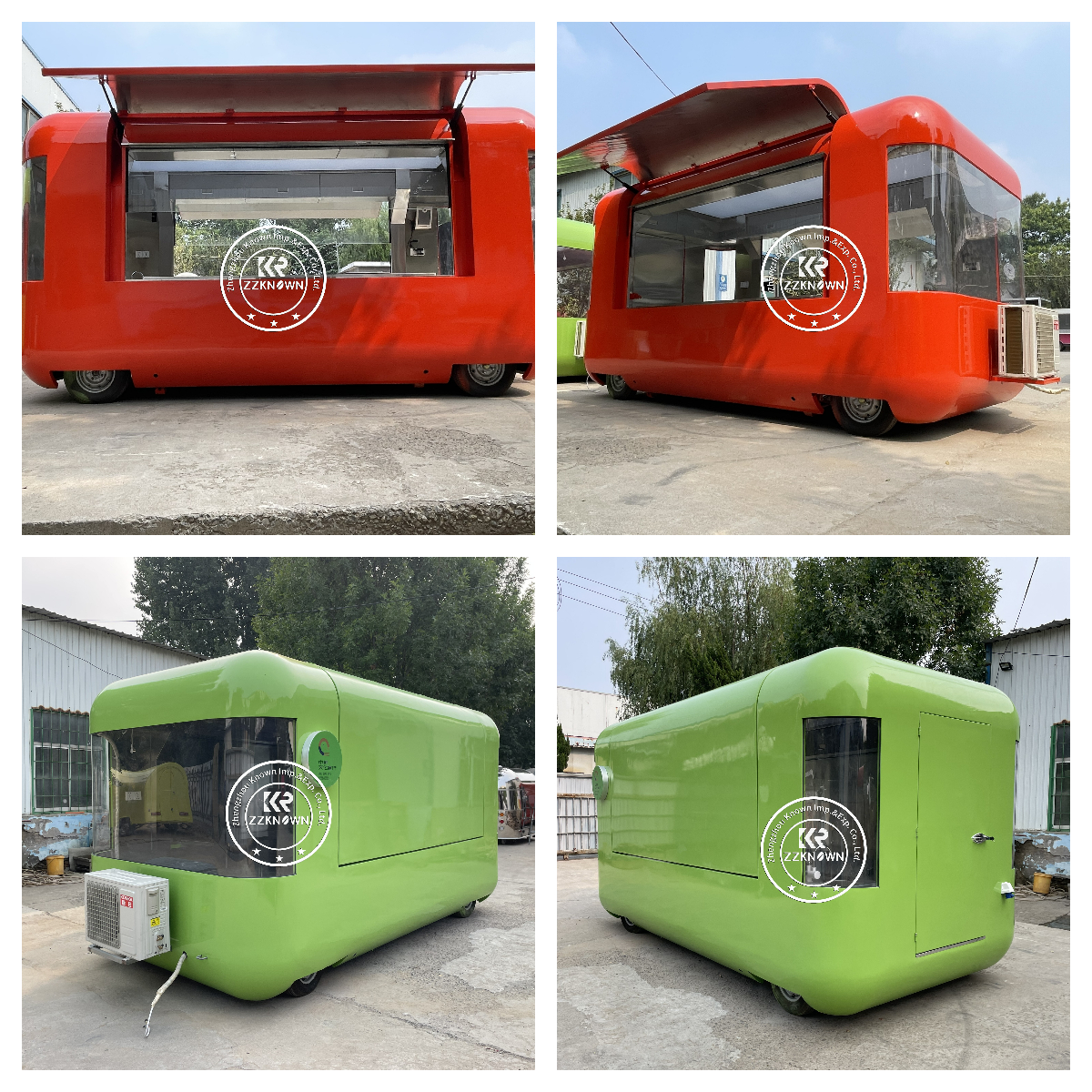Views: 0 Author: Site Editor Publish Time: 2024-09-11 Origin: Site
If you're thinking about jumping into the mobile food business, you're probably wondering which option suits you best. The food truck industry is booming, growing faster than ever. With an estimated $1.1 billion market in 2022, it's clear that food trucks are all the rage. But before you get started, it’s a good idea to figure out whether a food truck, food trailer, or food cart is the right choice for your business.
Mobile food businesses come in all shapes and sizes, so it’s important to understand the key differences between a food truck, a food trailer, and a food cart. Here’s a breakdown of the main things to think about when deciding which one fits your needs:
Food Trailer: The biggest of the three, ranging from 8-53 feet long and up to 8.5 feet wide.
Food Truck: Usually 10-26 feet long and about 7 feet wide.
Food Cart: The smallest option, typically 4-7 feet long and 2-6 feet wide.
Food Trailer: Plenty of room for full-sized restaurant equipment and a larger team.
Food Truck: A bit tighter, often requiring more compact equipment and fewer staff (around 1-3 people).
Food Cart: Very limited space, usually only enough for a small staff and minimal appliances.
Food Trailer: Typically $30,000-$50,000.
Food Truck: Anywhere from $50,000 to $250,000.
Food Cart: The most affordable, ranging from $5,000 to $20,000.
Food Trailer: Needs to be towed and might be too big for some parking spots.
Food Truck: Self-contained and easy to drive from place to place.
Food Cart: Can be pushed by hand or attached to a bicycle, making it the most portable.
Food Trailer: Best for large, multi-day events like fairs or weddings.
Food Truck: Ideal for city streets, festivals, and block parties.
Food Cart: Perfect for places like sidewalks, amusement parks, or boardwalks.
Food Trailer: Room for a full menu and multiple courses.
Food Truck: Typically offers a smaller menu with a specific cuisine focus.
Food Cart: Usually limited to a couple of specialty items.
Food Trailer: Great for long-term parking at big events.
Food Truck: Suited for quick stops around town.
Food Cart: Best for foot traffic in busy areas.

Food trucks are probably the most recognizable and popular option in the mobile food world. They combine a motor vehicle with a kitchen, and their compact size makes them perfect for city streets. Food is prepped and served from the window, making it a great choice for grabbing the attention of people passing by.
| Pros: | Cons: |
|
|

If you’re looking for more space, a food trailer could be a better option. These trailers can be towed to various locations, offering tons of room for a full kitchen setup. They’re great for events that require long-term parking and large-scale catering.
| Pros: | Cons: |
|
|

For new food entrepreneurs or those looking to cover smaller areas, a food cart is a great starting point. These compact mobile kitchens are perfect for targeting foot traffic in busy areas like sidewalks, parks, and boardwalks.
| Pros: | Cons: |
|
|

Whether you're leaning towards a food truck, food trailer, or food cart, it’s all about what fits your business goals, budget, and the type of events you want to serve. Take the time to consider each option carefully before jumping in!